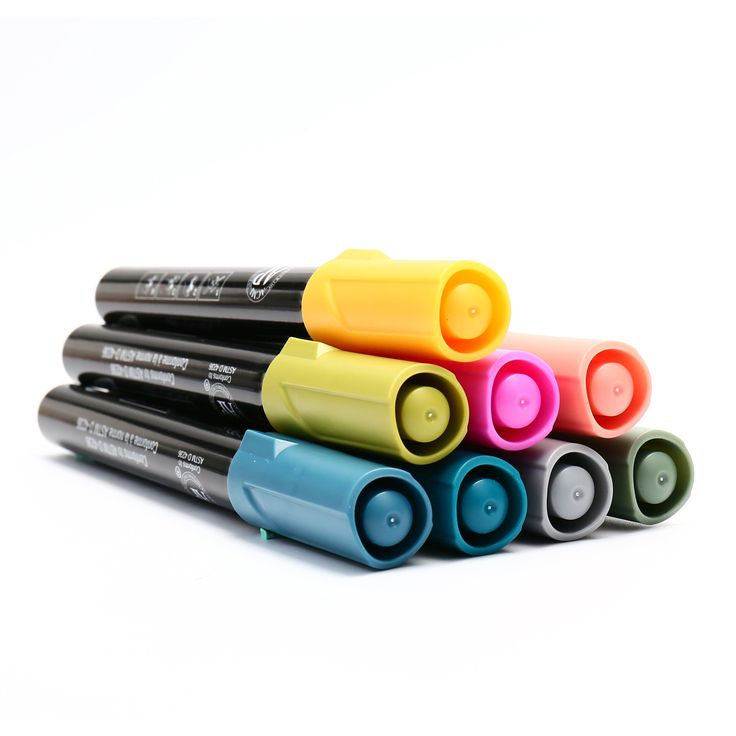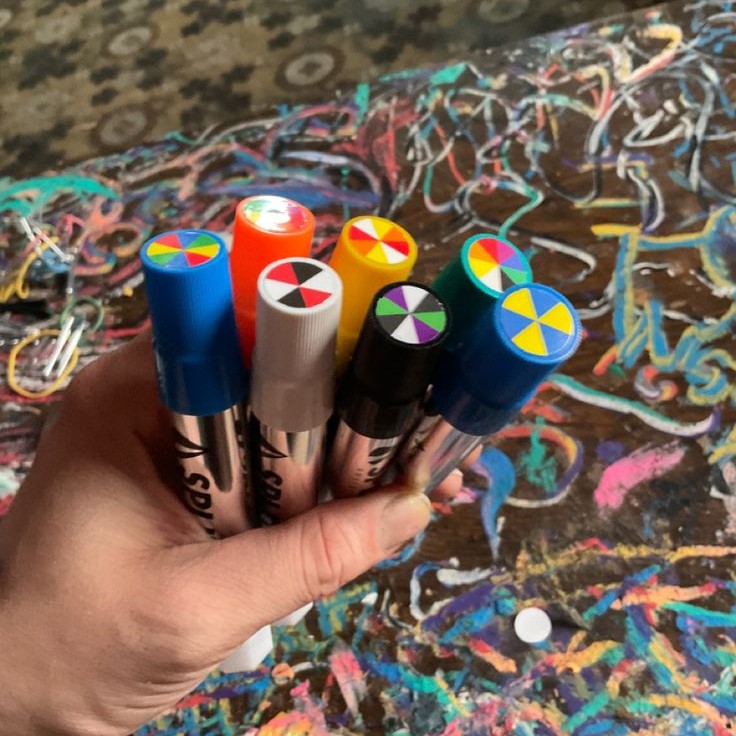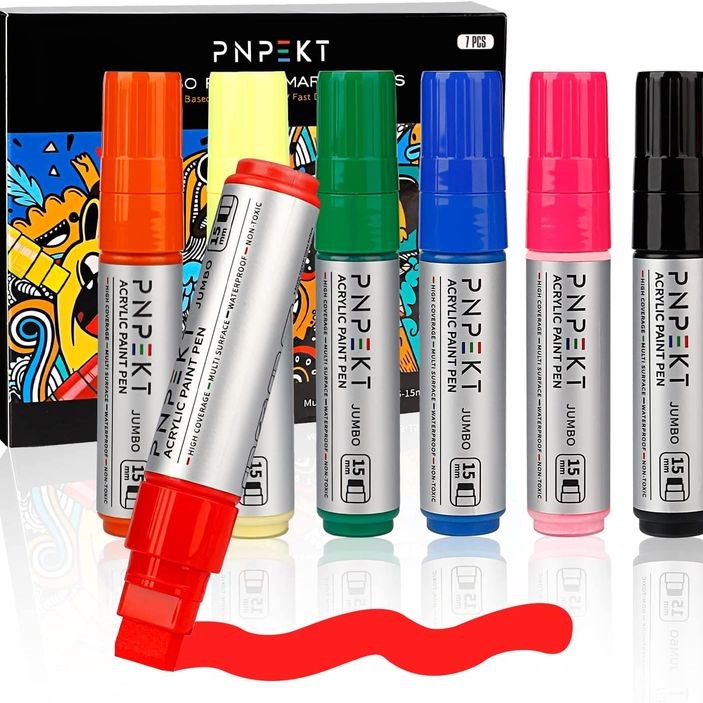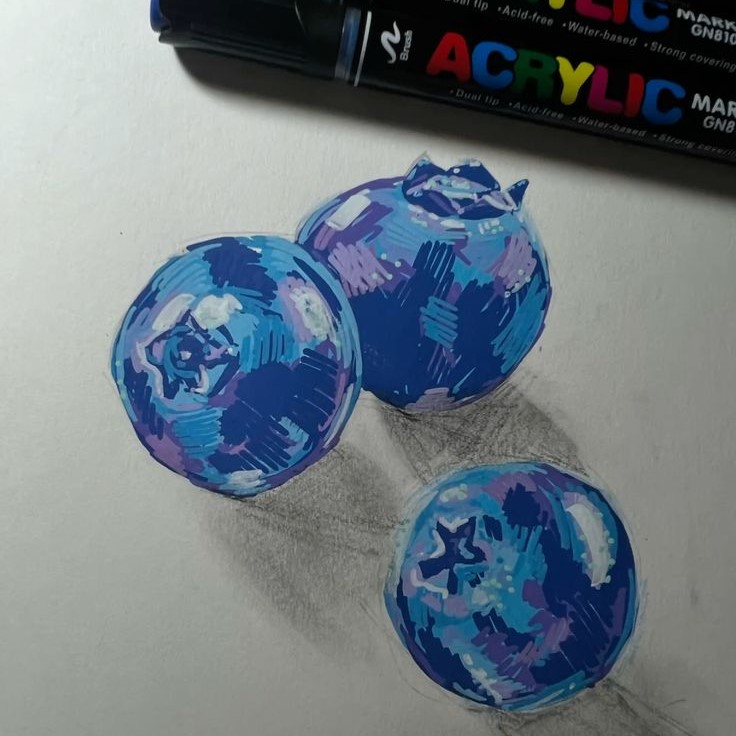What Are Oil-Based Paint Markers For?
Oil based paint markers are designed for a wide range of creative and practical applications. Unlike water-based markers, which dry quickly and may fade over time, oil-based paint markers provide a more permanent finish that is resistant to water, fading, and smudging. This makes them ideal for both artistic and functional projects.

One of the main uses of oil-based paint markers is for crafting and DIY projects. Artists often use them to add intricate details, outlines, or color to paintings, murals, and mixed-media works. Their fine tips allow for precise lines, while the bold colors make them perfect for creating striking visual effects.
In addition, oil based paint markers are commonly used for labeling and marking surfaces. They work well on metal, plastic, wood, and even glass, making them a versatile choice for labeling tools, containers, or equipment. Their durability ensures that the markings stay visible for a long time, even under harsh conditions.
Another important use is in industrial and commercial settings, where clear and lasting markings are essential. For example, mechanics might use paint markers to label parts, while manufacturers may use them to mark product codes or instructions.
Overall, what are oil-based paint markers for? They are a flexible and reliable tool that can use in art, craft, labeling, and industrial applications.
How Do You Use Oil Paint Marker?
Using an oil paint marker is simple and straightforward, but it’s important to follow some basic steps to get the best results. First, make sure the surface you’re painting is clean and free of dust or grease. This helps the paint adhere better and lasts longer.
Next, shake the marker well before use. This process ensures that you mix the paint evenly and that it flows smoothly when you apply it. If the tip gets clogged, you can gently press it against a piece of paper or cloth to unclog it.
When applying the paint, hold the marker at a comfortable angle and move it steadily across the surface. The oil-based formula allows for smooth, even strokes without the need for multiple layers. However, if you want to build up color or create depth, you can layer the paint after the first coat has dried.

After you’re done, let the paint dry completely before handling the surface. Depending on the thickness of the paint and the environment, this can take anywhere from a few hours to a full day. Once dry, the paint becomes more resistant to smudging and water.
It’s also worth noting that oil-based paint markers can use with other mediums. For example, you can combine them with acrylics or oils to create unique textures and effects.
In summary, how do you use oil paint marker? With a little preparation and practice, you can achieve professional-looking results every time.
Do Oil-Based Paint Markers Come Off?
One of the most common questions about oil based paint markers is whether they come off easily. The short answer is that they are very durable and difficult to remove once dry. This is one of their key advantages, as it means the paint stays in place for a long time.
However, there are ways to remove paint markers if needed. For example, using rubbing alcohol, acetone, or a strong solvent can help break down the paint and make it easier to wipe away. These methods work best on fresh paint, as the longer the paint dries, the harder it becomes to remove.
On some surfaces, such as glass, oil-based paint markers can remove more easily than on porous materials like wood or fabric. This is because glass is non-porous, so the paint doesn’t absorb into the surface. Still, it’s always best to test a small area first before applying the marker widely.
If you’re unsure whether you can remove the paint, consider using a removable or washable version of the marker. These markers design to be less permanent and work well for temporary projects or experiments.
So, do oil-based paint markers come off? They are long-lasting, but they can remove with the right tools and techniques.

Do Oil-Based Paint Markers Come Off of Glass?
Glass is a smooth, non-porous surface that presents a unique challenge for paint markers. While oil-based paint markers are generally durable, their performance on glass depends on several factors, including the type of marker, the paint formulation, and the surface preparation.
Most paint markers can stick to glass for a long time, especially if the surface is clean and properly prepared. However, they are not as permanent as acrylic or enamel paints, which are specifically formulated for glass. That said, oil-based markers can still last for months or even years, depending on the conditions.
To improve adhesion, you can clean the glass thoroughly with soap and water, then dry it completely. Some artists also recommend using a primer or a bonding agent to help the paint stick better. This is especially useful if you’re planning to use the painted glass for a long-term project or display.
Another consideration is light exposure. Prolonged sunlight can cause the paint to fade or peel over time. To protect your artwork, you can apply a clear sealant or varnish after the paint has dried.
In conclusion, do oil based paint markers come off of glass? They can stay on the surface for a long time, but they may eventually fade or peel, especially if exposed to harsh conditions.
Why Oil-Based Paint Markers Are a Must-Have
There are many reasons why oil-based paint markers should be in every artist’s or crafter’s collection. One of the biggest advantages is their durability. Unlike water-based markers, which can fade or smudge easily, paint markers remain vibrant and intact for a long time.
Another benefit is their versatility. They work well on a variety of surfaces, including wood, metal, glass, and fabric. This makes them ideal for a wide range of projects, from customizing mugs to painting on metal signs.

They are also easy to use, especially for beginners. The fine tips allow for detailed work, while the thick body of the marker provides good control. Plus, they don’t require special tools or techniques, making them accessible to everyone.
Additionally, oil-based paint markers offer great color saturation. The paint is rich and opaque, allowing you to cover surfaces effectively with just a few strokes. This is especially useful for covering dark or colored backgrounds.
Finally, they are cost-effective. A single marker can last a long time, and the high-quality finish means you don’t have to repaint frequently.
In short, why oil-based paint markers are a must-have? Because they are durable, versatile, easy to use, and offer excellent results on a wide range of surfaces.
Tips for Using Oil Paint Markers Effectively
To get the most out of your oil-based paint markers, it’s helpful to follow a few simple tips. First, always shake the marker well before use to ensure the paint is evenly mixed. This prevents uneven flow and ensures consistent color.
Second, apply the paint in thin layers. Thick layers can lead to uneven drying and may cause the paint to crack or peel over time. Thin layers, on the other hand, dry faster and provide a smoother finish.
Third, let the paint dry completely before handling the surface. This gives the paint time to set and reduces the risk of smudging or damage. If you’re working on a large project, consider breaking it into sections and letting each part dry before moving on.
Fourth, apply a sealant to protect your finished work. Using a clear varnish or sealant can help preserve the paint and increase its longevity, especially on surfaces exposed to moisture or sunlight.
Lastly, store the markers properly. Keep them in a cool, dry place, and ensure that you close the caps tightly to prevent the paint from drying out.
By following these tips, you can maximize the performance of your oil-based paint markers and enjoy beautiful, long-lasting results.

Conclusion
In conclusion, oil based paint markers are a must-have for anyone involved in art, crafting, or DIY projects. Their durability, versatility, and ease of use make them an excellent choice for a wide range of surfaces, including wood, metal, and glass. Whether you’re looking to create intricate designs, label items, or add color to your artwork, these markers offer a reliable and effective solution.
We’ve explored what oil-based paint markers are for, answered how to use an oil paint marker, and discussed whether paint markers come off and whether they come off glass. Each of these topics highlights the strengths and potential limitations of this versatile tool.
With the right techniques and care, oil-based paint markers can deliver stunning results that last for years. So, if you’re looking for a reliable and long-lasting painting solution, consider adding oil based paint markers to your creative arsenal today.